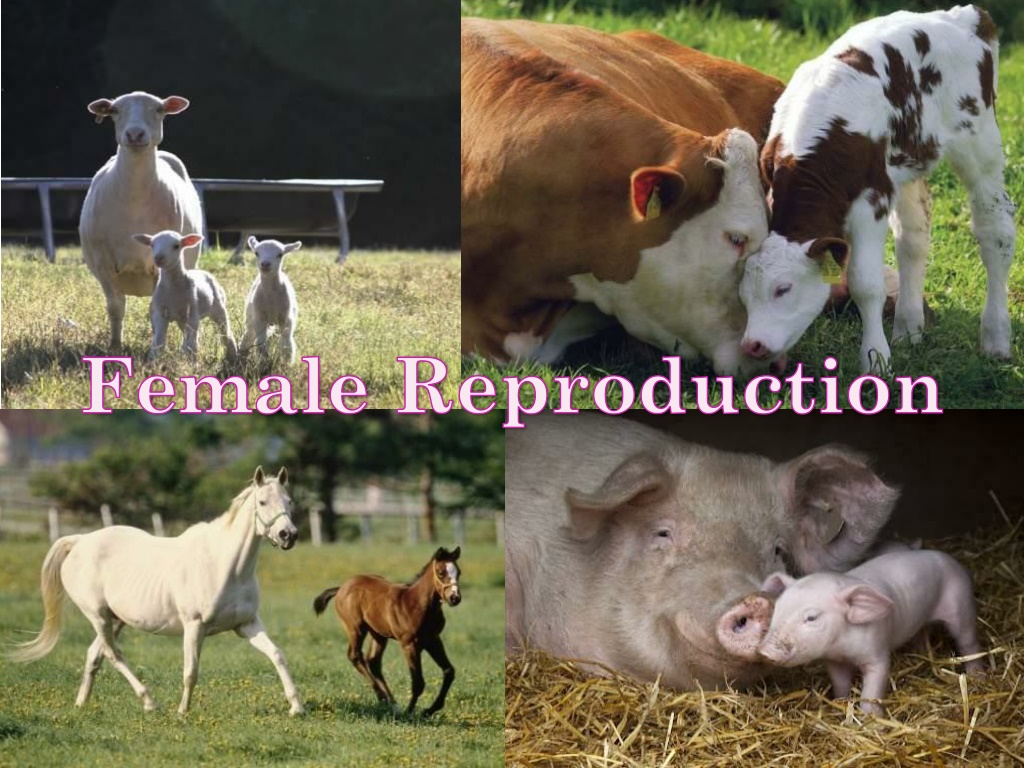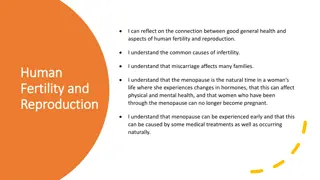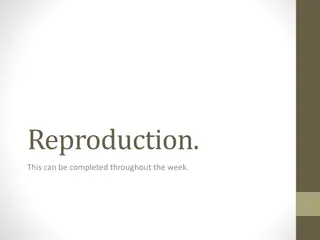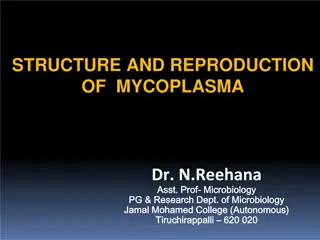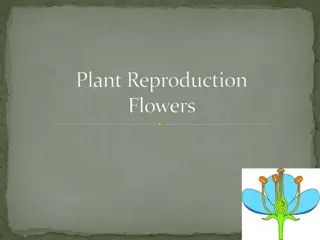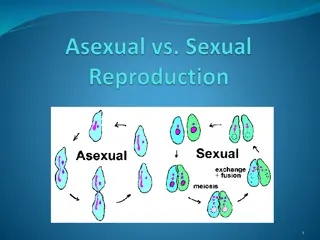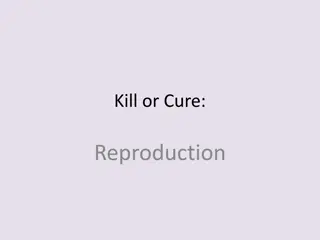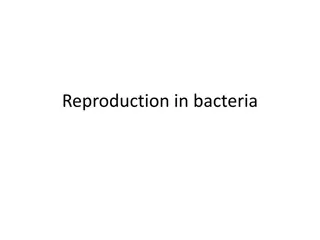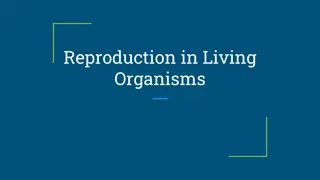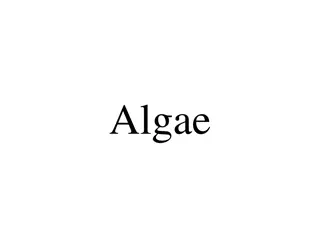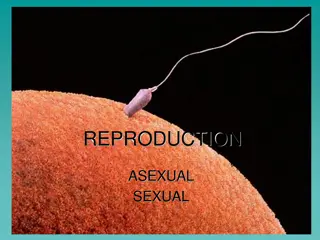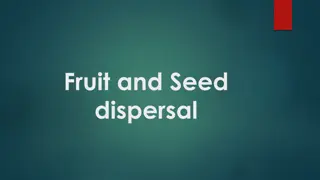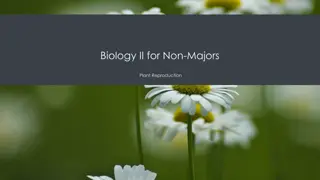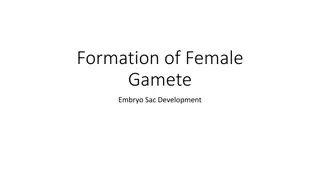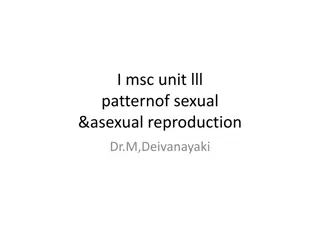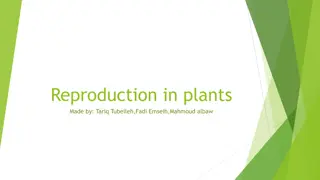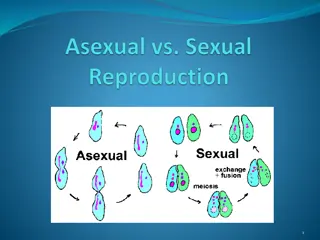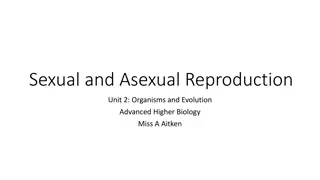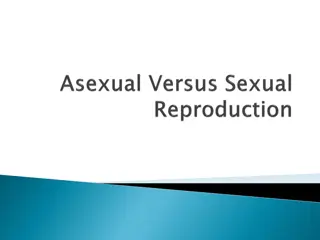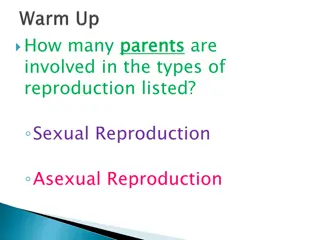Understanding Female Reproduction System
The female reproduction system plays a crucial role in producing fertile eggs, hormones, and facilitating fertilization, pregnancy, and birth. Key terms like estrous and estrus, ovulation, and folliculogenesis are essential to grasp. The female reproductive tract consists of tubular organs like the vagina, uterus, cervix, and oviducts. Understanding the functions and organs of female reproduction is vital for reproductive health and fertility.
Download Presentation

Please find below an Image/Link to download the presentation.
The content on the website is provided AS IS for your information and personal use only. It may not be sold, licensed, or shared on other websites without obtaining consent from the author. Download presentation by click this link. If you encounter any issues during the download, it is possible that the publisher has removed the file from their server.
E N D
Presentation Transcript
FEMALE REPRODUCTION Job of the female reproduction system: Produce an fertile egg Produce hormones Reset the ovulation cycle Transport the egg and sperm to the site of fertilization House, protect, and grow a fetus and placenta Birthing of the fetus
IMPORTANT TERMS Estrous vs. Estrus Estrous: the entire cycle that occur between when the animal goes into heat and ovulation. Estrus: the period of standing heat. The female is sexually receptive to the male. Ovulation: Occurs when the egg is released from the follicle to be fertilized. Oocyte = egg Ovarian Fossa: The spot of ovulation in the mare. Luteolysis: Dying of the Corpus Luteum Foliculogenesis: Process where immature follicles develop into mature follicles
FEMALE REPRODUCTIVE TRACT The female reproductive tract can be described as: tubular or a series of tubes The tubular organs of the female reproductive tract are: Vagina Uterus Cervix Oviducts The tract is lined by a layer called: Muscularis layer Function: transport sperm and egg to the site of fertilization contractions of the tract pushing the fetus out of the body during birth
FEMALE REPRODUCTION ORGANS Important Organs: Vulva and Vagina External Genitalia Cervix Uterus Uterine Horns Ovary Follicle Oviduct
VULVAAND VAGINA Vagina: Location: Connects to the cervix to external genitalia Function: Birth canal Place where sperm is deposited Site of urination Species Differences: Only the bull and ram will deposit sperm here Boar and Stallion deposit sperm in the cervix at the opening of the uterus Vulva: External tissue of the female reproductive tract Receives the penis during copulation Organs: Left and Right Labia: 1st defense against bacteria entering the reproductive tract Anus Vulva Left Labia Right Labia
CERVIX Description: Forms a VERY tight barrier between itself and the uterus Different shapes for different species Location: Between the Vagina and Uterus Function: Lubrication for sperm transport Flushing of the Fetus Barrier against bacteria entering the uterus Species Differences in the Shape of the Cervix: Cow, Ewe, Nanny: Annular Rings Sow: Corkscrew Shape Mare: Longitudinal Folds Species Differences between Males: Stallion and Boar will deposit sperm here at the opening of the cervix Ram and Bull deposit sperm in the vagina
CERVIXOFA COW, EWE, OR NANNY Annular Rings Annular rings
OVIDUCT Location: In between the Ovary and Uterine Horn Function: Transport of the ovulated egg and sperm Fertilization Early embryo development Consists of: Infundibulum: Catchers Mit Surrounds the ovary to catch ovulated eggs and put them in the oviduct Ampulla Moves the egg and sperm through the oviduct Ampullary-Isthmic Junction (AI Junction) Site of Fertilization Isthmus Joins with the Ampulla to the Uterine Horn Uterotubal Junction: Joins the Oviduct to the Uterine horn Species Difference: Horse: Has a specialized oviduct that only allows fertilized eggs into the uterus
UTERUS Location: Between the Oviduct and the Cervix Function: Sperm transport Control of follicle growth cycles House and grow the embryo Expulsion of the fetus Consists of: Body and two uterine horns Types of Uterine Horns Simplex Duplex Bicornuate
UTERINE HORNS 3 different types: Simplex Uterine body has NO uterine horns Example: primates and humans Duplex Two cervices that form into two uterine bodies and two uterine horns Example: marsupials and rabbits Bicornuate Two uterine horns Depending on the species will either have poorly developed uterine horns or highly developed horns Development depends on litter size Larger the litters the longer and more developed the uterine horns Smaller the litters the shorter and less developed the uterine horns Example: ALL Livestock Sow, Bitch, Queen: Highly Developed Uterine Horns Cow, Ewe, Mare: Poorly Developed Uterine horns
UTERINE HORN Oviduct Uterine Body
UTERINE HORN Oviduct Cervix 1 Cervix 2 Uterine Body Cervix 1 Cervix 2
UTERINE HORN 2 Uterine Horns Uterine Body Cervix Oviduct Uterine Horn
FEMALE REPRODUCTION VIDEO Female Reproduction video
HORMONES What is a hormone? Definition: a chemical messenger that travels to specific organs and prompts a specific response from the organ Characteristics of Hormones: Low amounts are secreted Important Hormones: Estrogen Progesterone Follicle Stimulating Hormone (FSH) Luteinizing Hormone (LH)
HORMONES Estrogen Produced by: Ovary (Follicle) Function: Regulate reproductive cycling Behavioral displays during estrus Progesterone Produced By: Ovary (Corpus Luteum) Function: Essential for the maintenance of pregnancy Follicular Stimulating Hormone (FSH) Produced by: Anterior Pituitary in the brain Function: Causes follicular growth in the ovary Luteinizing Hormone (LH) Produced by: Anterior Pituitary in the brain Function: Responsible for causing ovulation Stimulating the Corpus Luteum(Follicle stage) to secrete progesterone
ESTROUS CYCLE: PHASES Follicular Phase: Proestrus and Estrus Ends at the time of ovulation Peak Estrogen Luteal Phase Diestrus and Metestrus Starts at the beginning of ovulation Peak Progesterone Luteolysis: Dying of the Corpus Luteum P4 = Progesterone E2 = Estrogen
ESTROUSVS. ESTRUS Estrous: the entire cycle that occur between when the animal goes into heat and ovulation. Estrus: the period of standing heat. The female is sexually receptive to the male. Luteal Phase: Diestrus: Peak Progesterone Production Proestrus Formation of follicles Follicular Phase: Estrus Sexual receptivity Peak Estrogen secretion Metestrus Corpus Luteum Formation P4 = Progesterone E2 = Estrogen
OVARY Location: Connected to the oviduct Function: Storage site of the immature follicles Produce the ooctye(egg) Produce hormones: Estrogen Progesterone Follicle: The follicle is produced in the Ovary Houses the egg until ovulation. Species Difference: Horse: The horse will ovulate in the same place every cycle The horses ovary has an Ovarian Fossa which is the spot of ovulation in the mare
FOLLICLE Ovulation: Occurs when the egg is released from the follicle to be fertilized. Foliculogenesis: Process where immature follicles develop into mature follicles Follicle Description: Every female is born with a certain amount of eggs or oocytes that are stored in the ovary The follicle is produced by the ovary Each follicle contains 1 egg or oocyte The follicle produces estrogen
FOLLICLE CONTINUED Stages of Foliculogenesis: Primary Oocyte Secondary Oocyte Mature Oocyte Corpus Hemorragicum Ruptured Follicle Ovulation Corpus Luteum Corpus Albicans Degenerating Corpus Luteum
FOLLICLE CONTINUED Follicle Stages Before Ovulation: Primary Follicle: Most immature form of a follicle Secondary Follicle: Matured follicle More outer cell layers surrounding the follicle Mature or Graafian Follicle 1st stage to be capable of ovulation 1st stage to be capable of fertilization
FOLLICLE CONTINUED Foliculogenesis after Ovulation: Corpus Hemorrhagicum Known as the bloody body This is caused by the follicle ovulating (Releasing the egg) causing it to bleed and look like a bloody body Corpus Luteum Yellow body Produces Progesterone Progesterone is REQUIRED for pregnancy Corpus Albicans Scar tissue This tissue forms on the ovary after the corpus luteum regresses and disappears (luteolysis)
PATHWAYFORTHEOVULATINGFEMALE THAT SEGGWILL NOT BEFERTILIZED The Estrus cycle begins. The follicle begins to grow with the stimulation of FSH and increasing amounts of LH from the brain. Once the follicle has fully matured into a Graafian follicle, FSH will be stopped and LH will peak. The follicle will rupture and ovulation occurs (releasing of the egg) and a Corpus Hemmoragicum (Bloody Body) forms. The Corpus Hemmoragicum will turn into a Corpus Luteum that begins producing progesterone. If the female is not pregnant, the corpus luteum will die and turn into a Corpus Albicans (scar tissue will form where the corpus luteum was). The released egg will pass through the oviduct not fertilized and die. Since the body does not receive signals that the female is pregnant, the cycle will be restarted. 1. 2. 3. 4. 5. 6. 7. 8.
PATHWAYFORTHEOVULATINGFEMALE THAT SEGGWILLBEFERTILIZED Female begins her estrus cycle and is receptive to the male. The follicle begins to grow with the stimulation of FSH and increasing amounts of LH from the brain. Once the follicle has fully matured into a Graafian follicle, FSH will be stopped and LH will peak. The follicle will rupture and ovulation occurs (releasing of the egg) and a Corpus Hemmoragicum (Bloody Body) forms. The Corpus Hemmoragicum will turn into a Corpus Luteum that begins producing progesterone. The released egg will be caught by the infundibulum and enter the oviduct. The male deposits sperm in either the vagina or cervix depending on the species. The sperm travel through the cervix into the uterus or uterine body. The sperm swim into the oviduct and fertilize the ovulated egg in the Ampulla-Isthmic Junction (AI Junction). The fertilized egg will travel into the uterus where it will attach and grow into a fetus. After the Fetus is fully matured the female will give birth. 1. 2. 3. 4. 5. 6. 7. 8. 9. 10. 11.
REFERENCE WEBSITESUSED Hormone Reference Female Organ Reference
